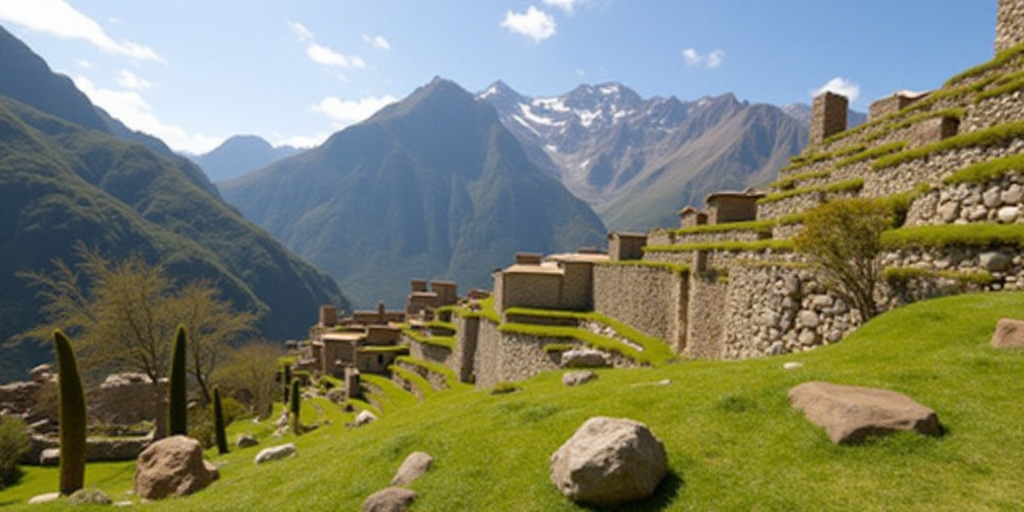Mexico: A Growing Market
The interest of Mexican travelers in visiting Peru continues to rise. In 2024, the number of Mexican tourists visiting Peru increased by 36%, from 76,300 in 2023 to 104,000 travelers. Max Rodríguez, Director of the Peruvian Commercial Office in Mexico (Promperú), explained during an interview with El Economista at the IBTM Americas 2025 in Mexico City, the strategies that are establishing Peru as a leading destination for experiential and meeting tourism.
Amazonia: Luxury and Sustainability
Among the most sought-after attractions by Mexican travelers is the Peruvian Amazonia, offering luxury experiences with boutique cruises accommodating only 40 passengers. These exclusive cruceros allow travelers to immerse in nature without overcrowding.
“Imagine waking up and opening your window to the heart of the Amazon rainforest. That’s the magic of these cruises,” said Rodríguez, highlighting that half of the passengers are typically Mexican.
Moreover, sustainable lodges nestled in the heart of the rainforest have gained prominence. From treehouse-style bungalows to natural reserves like Chaparrí, the experience blends luxury tourism with direct benefits for local communities.
Culture and New Destinations
Rodríguez mentioned that while Machu Picchu remains the iconic symbol, travelers are increasingly seeking diverse experiences. Destinations like Arequipa, Cusco, Puno, and Lake Titicaca offer cultural, historical, and adventure alternatives.
- Machu Picchu: The world-renowned Incan cultural emblem.
- Cusco: The historic capital with colonial architecture.
- Lake Titicaca in Puno: The world’s highest navigable lake.
- Amazonia in Iquitos: Ideal for boutique cruises.
- Arequipa: “The White City” and its Colca Canyon.
- Chiclayo: A city rich in archaeology, gastronomy, and the Papal Route.
- Paracas: A coastal resort south of Lima with islands and natural reserves.
Even lesser-known regions like Chiclayo are gaining attention. The city was home to Pope Leo XIII for 30 years, and today it promotes a “Papal Route” as a themed experience. Chiclayo is also recognized for its gastronomy and archaeological museums. “Mexican travelers are driving demand for new Peruvian destinations. They seek culture, gastronomy, nature, and themed routes like the Papal one in Chiclayo,” Rodríguez noted.
Gastronomy: A Cultural Bridge
Rodríguez emphasized that Mexico and Peru share millenary roots and a gastronomic heritage that has placed both countries in the world’s culinary elite.
“When we talk about gastronomy, we’re talking about identity, history, and creativity. That’s one reason so many Mexicans feel curious about exploring Peru,” he said.
MICE Tourism and Events
The growth in the meetings segment is also strategic. During IBTM Americas, Promperú secured over 180 business meetings in a single day, surpassing initial expectations.
“MICE tourism is crucial because it attracts travelers with higher spending capacity and helps break seasonality,” Rodríguez added.
Key Questions and Answers
- What is driving the growth in Mexican travelers visiting Peru? The country’s diverse culture, renowned gastronomy, and unique experiences like the Amazon rainforest are attracting more Mexican tourists.
- What makes Peruvian Amazonia appealing to Mexican travelers? Exclusive boutique cruises with only 40 passengers offer luxury experiences in the heart of the rainforest, allowing travelers to immerse in nature without overcrowding.
- Which new destinations in Peru are gaining popularity among Mexican travelers? Arequipa, Cusco, Puno, Lake Titicaca, Iquitos’ Amazonia, and Chiclayo with its Papal Route are becoming increasingly popular.
- Why is gastronomy significant in the Peru-Mexico relationship? Both countries share deep-rooted culinary heritage, placing them among the world’s top gastronomic destinations.
- How is MICE tourism contributing to Peru’s growth? MICE tourism attracts high-spending travelers and helps break seasonality, contributing to Peru’s overall tourism growth.






